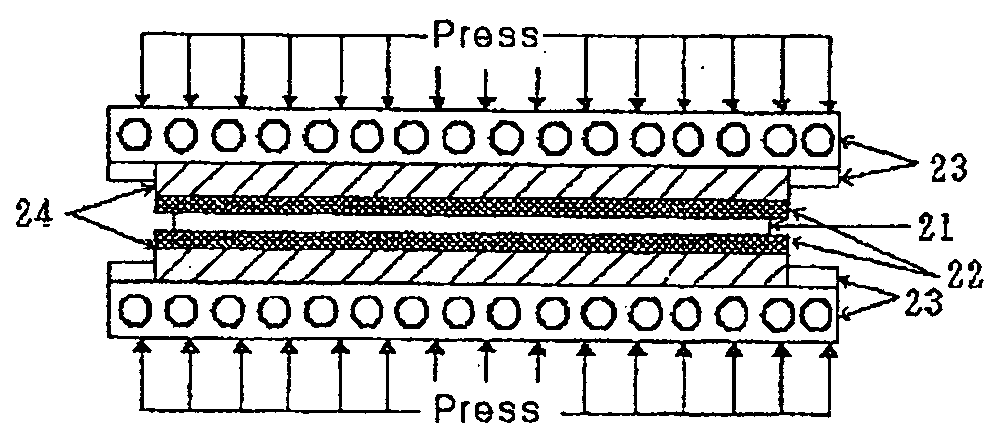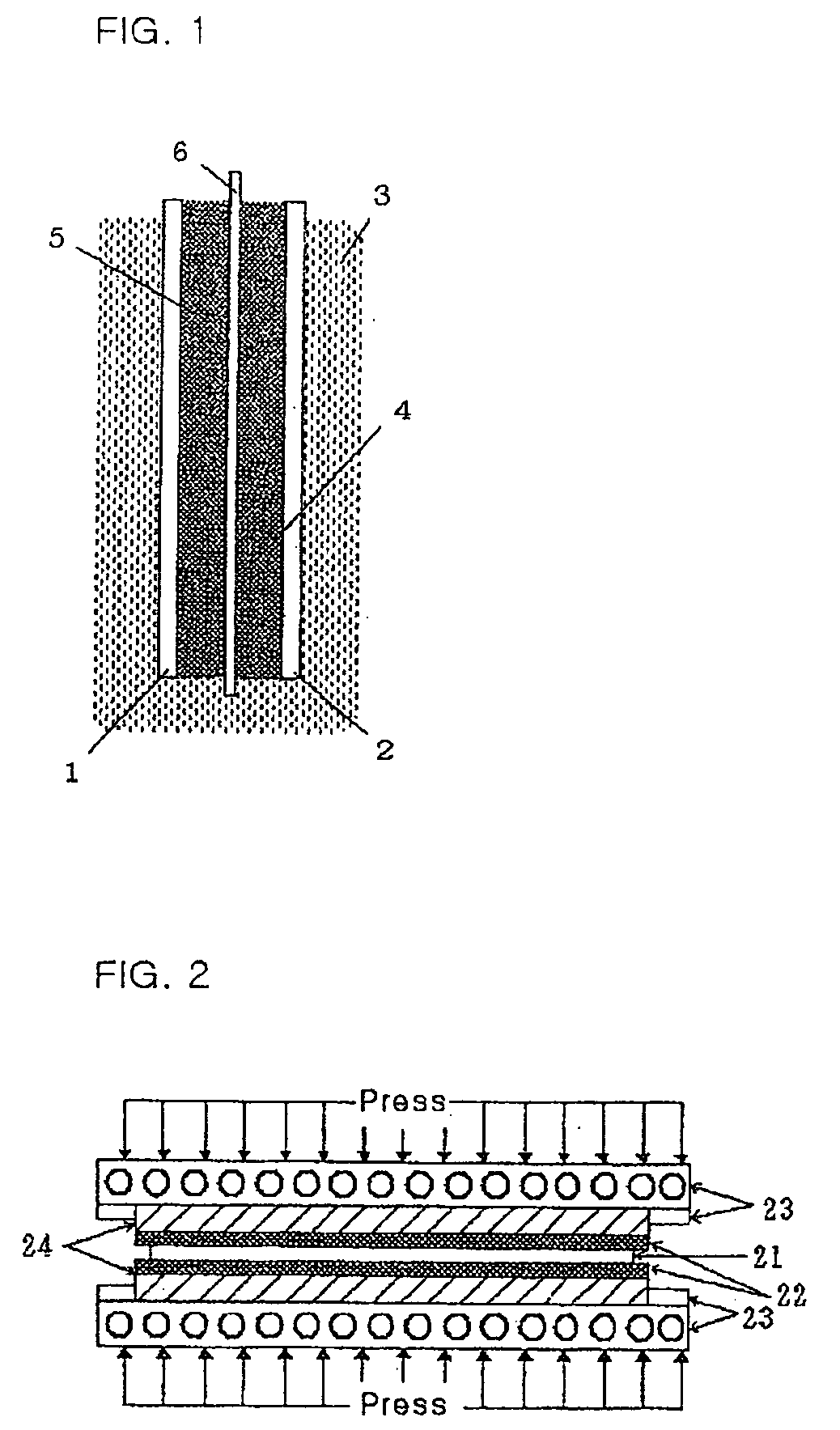Self-rechargeable alkaline battery
- Summary
- Abstract
- Description
- Claims
- Application Information
AI Technical Summary
Benefits of technology
Problems solved by technology
Method used
Image
Examples
embodiment 1
[0028] The structure of a battery having an electrode plate according to a first embodiment of the invention will now be described. Referring to FIG. 1, in the battery of the invention, when a cathode and an anode are connected through an electrolyte 3 which has an oxidizing agent and a reducing agent facing each other therein as a cathode active material 1 and an anode active material 2, respectively, reduction occurs at the cathode and oxidation occurs at the anode, so that electrons flow from the anode to the cathode through an outer load (not shown), and thus current flows from the cathode to the anode.
[0029] Copper is used for the cathode, and the anode active material 2 is constructed by a material selected from aluminum, zinc and magnesium. The electrolyte 3 comprises a 1˜8 N aqueous potassium hydroxide (KOH) solution, and a 1˜12 N aqueous sodium hydroxide (NaOH) solution. Typically, a higher concentration is preferable.
[0030] In particular, a reduction system of the anode ...
embodiment 2
[0041] An electrode plate formed through pressure carburization according a second embodiment will be described as follows. FIG. 2 is a diagram illustrating a process of forming the electrode plate according to the second embodiment.
[0042] Since aluminum, zinc or magnesium provided as the second metallic material for an electrode plate of the anode creates a strong oxide coat, it is difficult to diffuse carbon into the surface of the electrode plate through thermal gas carburization. Accordingly, conventionally, a charge donor such as a carbon material is attached to the metallic surface of the electrode plate using a binder, but since the binder is fitted into a surface cavity on the charge donor such as the carbon material, there is a problem of decreasing the surface area of the carbon material necessary for a charge layer.
[0043] In order to solve the problem as described above, according to the present embodiment, the large-area charge layer necessary for the electrode is form...
example
[0045] Output voltages of the battery according to the invention were detected using samples of the battery according to the invention and the conventional battery. In order to manufacture the battery samples, copper electrode plates (20 mm×50 mm×0.02 mm) were subjected to thermal gas carburization under the conditions in which one of carbon dioxide (CO2), acetylene (C2H2), butane (C4H10) and ethanol (C2H5OH) was used as a carbon containing gas, such that the steel surface of the electrode plates was coated with carbon crystals. The carburized copper electrode plates were used for a cathode of the battery samples, and typical aluminum material were used for an anode of the battery samples. Additionally, a fan of 25 mA was used as a load. After forming a zeolite layer on the electrode plates, the electrode plates were carburized by firing at a temperature of 200˜300° C. in a vacuum furnace. 100 parts of aluminum oxide, 40 parts of silicon oxide, 10 parts of manganese oxide, and 10 pa...
PUM
 Login to View More
Login to View More Abstract
Description
Claims
Application Information
 Login to View More
Login to View More - R&D
- Intellectual Property
- Life Sciences
- Materials
- Tech Scout
- Unparalleled Data Quality
- Higher Quality Content
- 60% Fewer Hallucinations
Browse by: Latest US Patents, China's latest patents, Technical Efficacy Thesaurus, Application Domain, Technology Topic, Popular Technical Reports.
© 2025 PatSnap. All rights reserved.Legal|Privacy policy|Modern Slavery Act Transparency Statement|Sitemap|About US| Contact US: help@patsnap.com


